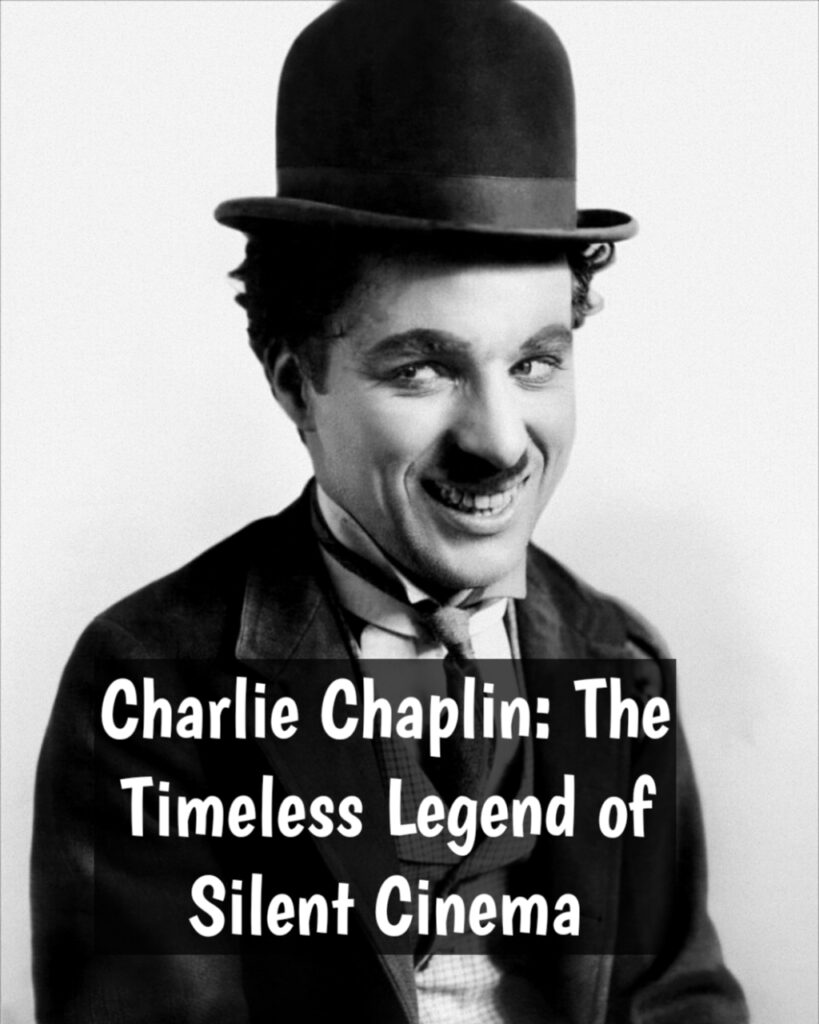Discover the incredible life and legacy of Charlie Chaplin, the master of silent films whose iconic character “The Tramp” continues to inspire audiences worldwide.
Charlie Chaplin, born Charles Spencer Chaplin on April 16, 1889, in London, England, is one of the most iconic figures in the history of cinema.
His influence on the art of film, particularly during the silent era, is unparalleled. Known for his character “The Tramp,”
Chaplin combined humor, pathos, and brilliant storytelling to create works that are still celebrated over a century later.
Early Life and Struggles

Chaplin’s early life was marked by hardship. His parents, both entertainers, separated when he was very young.
His mother, Hannah, struggled with mental illness and was institutionalized, while his father, an alcoholic, died when Charlie was just twelve years old.
As a result, Charlie and his half-brother, Sydney, spent time in workhouses, experiencing poverty firsthand.
Comedic timing
Despite these challenges, Chaplin was drawn to the stage from a young age. He began performing in music halls and gained recognition for his comedic timing and expressive physicality, traits that would later define his film career. His first significant break came with a touring company, where his talent was quickly noticed.
Rise to Fame
In 1913, Chaplin traveled to the United States and signed with Keystone Studios. It was here that he developed his “Little Tramp” persona — a shabby but dignified character with a bowler hat, mustache, cane, and distinctive walk. This character captured the hearts of audiences with his blend of humor and vulnerability.
Chaplin’s early films, such as Kid Auto Races at Venice (1914) and The Tramp (1915), showcased his genius for visual storytelling. His ability to express deep emotion without dialogue allowed his films to transcend language barriers, making him a global sensation.
Artistic Growth and Independence
Unwilling to compromise on his creative vision, Chaplin soon sought greater control over his work. In 1919, he co-founded United Artists alongside Mary Pickford, Douglas Fairbanks, and D.W. Griffith. This move gave him the freedom to write, direct, produce, and star in his own films.
Chaplin’s later silent films are masterpieces of cinema. The Kid (1921) blended comedy with touching drama, while The Gold Rush (1925) displayed his unparalleled ability to create humor out of desperation. Perhaps his most celebrated silent film, City Lights (1931), told the story of the Tramp’s devotion to a blind flower girl. The film’s final scene, where the girl recognizes the Tramp’s kindness, remains one of the most poignant moments in movie history.
Transition to Sound
The arrival of sound films posed a challenge for many silent film stars, but Chaplin was cautious. He believed that the Tramp was a universal character whose magic would be lost with dialogue. Instead of immediately embracing sound, he continued to create silent or near-silent films, adding carefully curated music scores.
The Dictator
His first true sound film, The Great Dictator (1940), was a bold political satire criticizing Adolf Hitler and fascism. Chaplin played two roles: a ruthless dictator and a kind-hearted Jewish barber. The film’s climactic speech, a passionate plea for peace and humanity, is one of the most powerful in cinema history.
Later Years and Legacy
The post-World War II period brought challenges for Chaplin. His political views, particularly his criticism of capitalism and support for progressive causes, made him a target during the Red Scare in America. In 1952, while traveling to Europe, Chaplin learned that his re-entry permit to the U.S. had been revoked. He decided to settle in Switzerland, where he lived for the rest of his life.
Twelve-minute standing ovation
Despite these setbacks, Chaplin continued to create films such as Limelight (1952) and A King in New York (1957). In 1972, after years of exile, he returned to the United States to receive an honorary Academy Award, where he was given a twelve-minute standing ovation — one of the longest in Oscar history.
Charlie Chaplin passed away on December 25, 1977, at the age of 88. His death marked the end of an era, but his legacy lives on.
Influence and Timelessness
Chaplin’s impact on cinema is tremendous. His films demonstrated that comedy could be an art form capable of exploring the deepest human emotions. His innovative use of slapstick, combined with tenderness and social commentary, paved the way for generations of filmmakers and comedians.
Beyond the screen, Chaplin’s life story — rising from poverty to global fame — remains a testament to resilience and artistic integrity. His works continue to be studied and celebrated around the world, proving that great storytelling transcends time and technology.
Today, Charlie Chaplin remains a symbol of the power of laughter and the enduring spirit of humanity.
